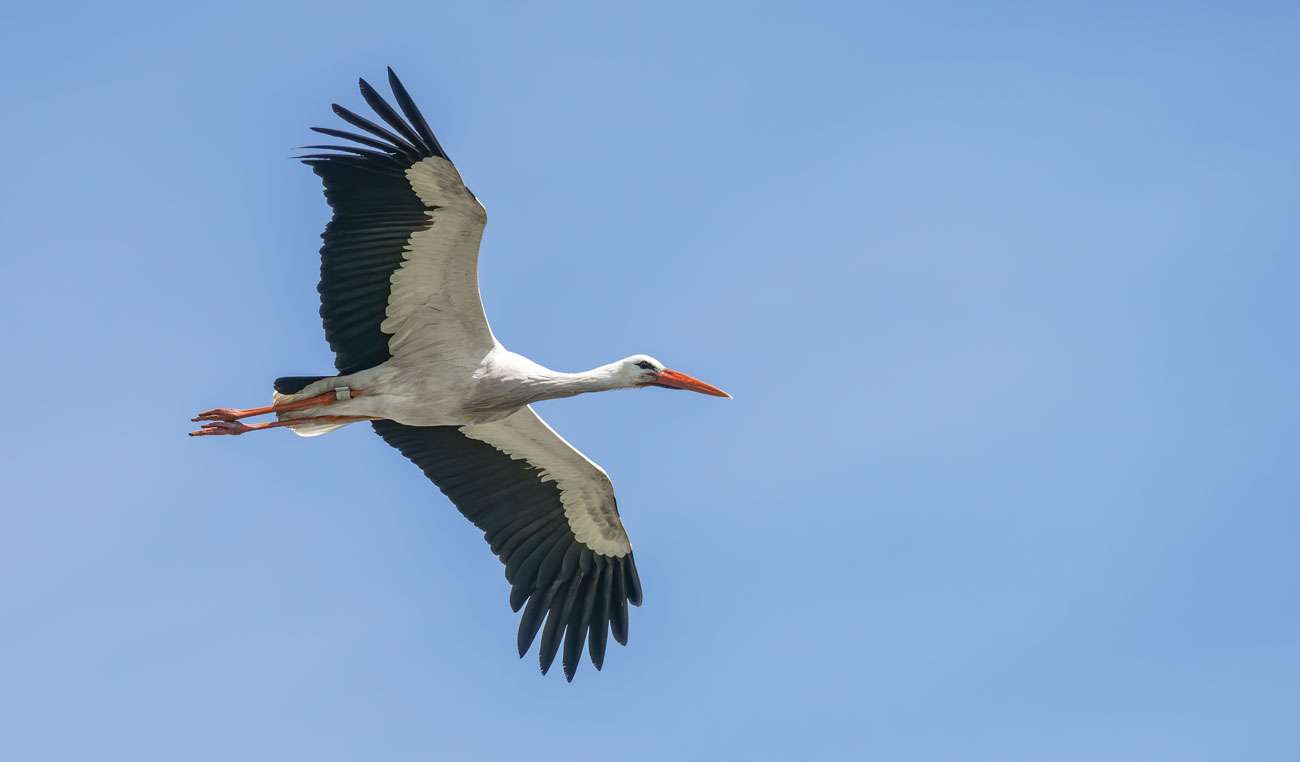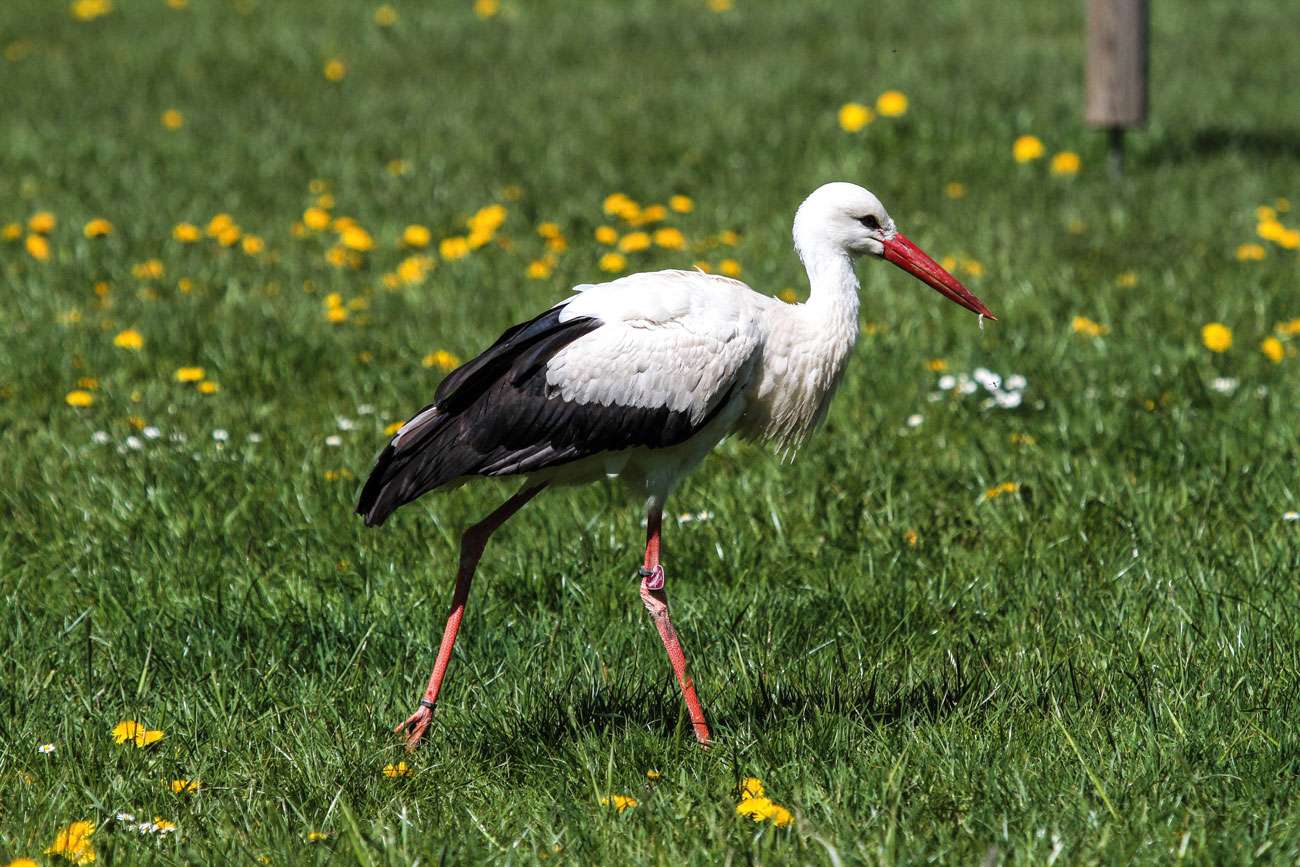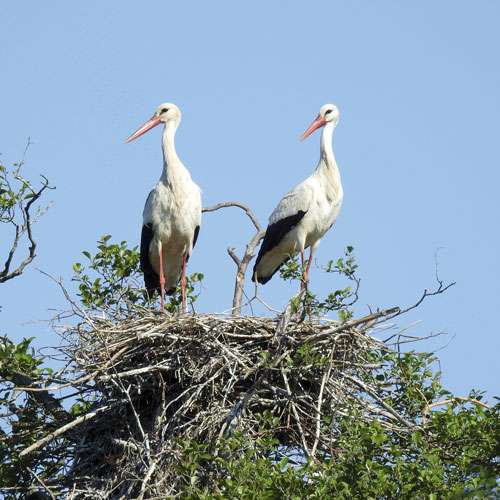
White Stork, (Ciconia ciconia). Impressive glider: Look what conservationists are bringing back
The day was hotting up and as I gazed down from my vantage point in the Surrey Hills I noticed a slowly circling Red Kite below me.
As it rose gradually on a thermal until it was at eye level I then spotted three much larger birds joining it for the free ride.
Even bigger than the Grey Herons we often see around here, these monsters with stonking red dagger bills and legs were White Storks.
These mythical birds, extremely rare in Surrey but with a growing number of sightings in recent times, ascended powerfully on outstretched black and white wings until they were about 1,000 feet up.
Having gained the height they needed they suddenly pulled out of their impressive gliding display and hit the full power button to head swiftly east towards Capel. Mr Kite was left trailing in their slipstream.
I think it is most likely that this trio had not, as some do, overshot their continental breeding areas on their long journey north from Africa. They were probably of more local origin, hailing from the Knepp Estate rewilding adventure over the Surrey border in West Sussex.
White Storks, high and mighty: could this become a common local sight?
The ambitious White Stork Project there aims to bring back this species as a breeding bird in Britain. Archaeological records show Storks were with us in ancient times.
Until the reintroduction programme our last known breeding record was of a pair nesting on Edinburgh’s St Giles Church in 1416.
Efforts to bring back the species, celebrated excitedly by a large section of the public every time a new baby is born – ‘Look what the Stork brought!’ – were achieved over 700 years later with breeding success at Knepp in 2019, and subsequently.
We can all expect to see more White Storks in the Cranleigh area if this continues. What a sight they would be nesting on top of the giant cedar in St Nicolas’s churchyard!
My only previous encounter with this species in the village was when an immature bird frequented Cranleigh Common cricket pitch in September 1990.
The event brought scores of onlookers from far afield and no doubt they boosted trade at the Cranley Hotel where it roosted on the chimney stack.
There were suggestions it may have been one of two free-flying escapes from Whipsnade Zoo, which were said to be ‘ranging widely over southern England at the time.’ It was assumed to be the same as one seen over Weybridge and possibly the same as one recorded at various Sussex sites later in the year. Equally, it might have come from Holland.

White Stork, (Ciconia ciconia) striding out to pastures new
I became aware of the bid to restore the White Stork as a breeding bird in Britain during a family outing to Cotswold Wildlife Park four years ago. Dozens of them were gathered in a pen and I could not understand why so many birds needed to be on display.
They turned out to be the foundation stock, hatched from the eggs of birds in eastern Europe, being prepared for the reintroduction programme which involves some visionary landowners. These include the local Hutley family on the Wintershall Estate in Bramley, home of those amazing open-air performances about the life of Jesus.
The first nativity production started there in a barn in 1989 so if any bird had to be reintroduced from this site then the White Stork – which I’ve seen flying in flocks of hundreds near Bethlehem – could not have been a more appropriate choice.
Legend has it that the ‘patron of babies’, widely regarded as a good luck symbol and a sign of prosperity, showed compassion towards the baby Jesus by painfully pulling out its feathers to make the infant comfortable in the manger.
This, unsurprisingly, does not figure in the Stork’s six Biblical mentions. But if the legend’s moral – that selfless service is recognised and rewarded in due time – does encourage kinder actions in our often-selfish world then surely that is a bonus for us all.
Twitter – @Crane_Spotter
Click here to see all of Robin Stride’s previous Crane Spotters.












